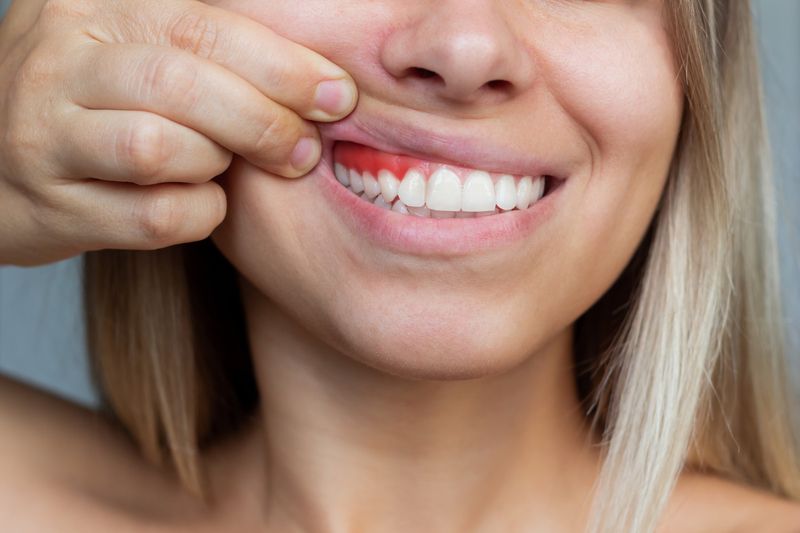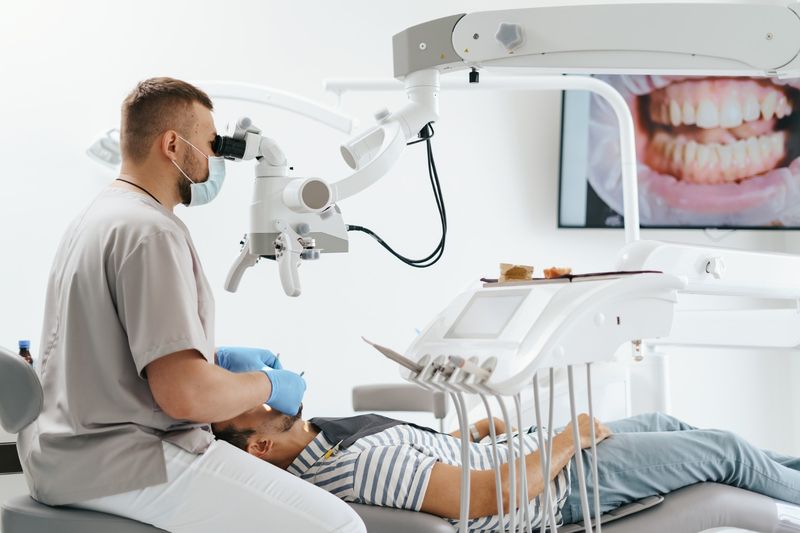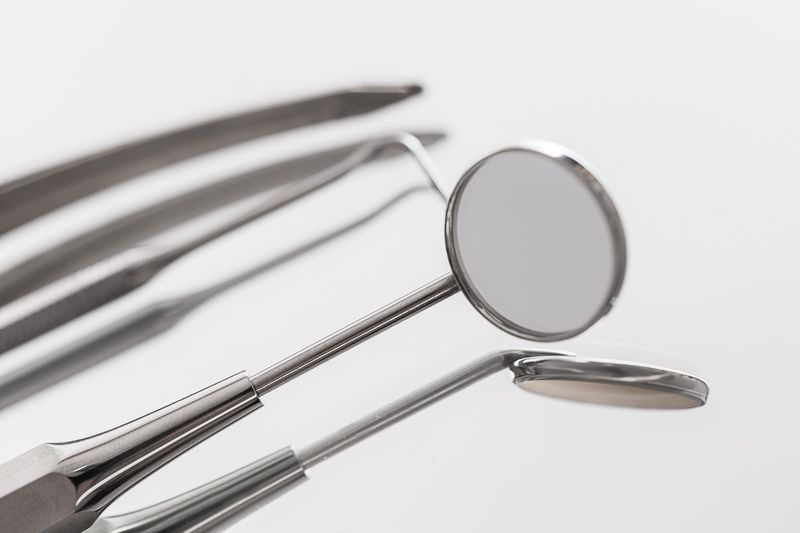All You Need to Know About Gum Grafts
Gum graft is typically used to prevent gingival recession caused by gum diseases or for purely aesthetic purposes.
Gum disease (periodontitis), which affects almost half of adults, may cause swelling of the gums, bleeding gums, inflamed gums, and even tooth loss if left untreated.
The most important cause of gum disease is plaque. Bacteria accumulations in the plaques cause the gums to be infected.

Patients often can't notice gum diseases because they progress so slowly. When noticed, they usually spread too much and are more serious. In this respect, regular dentist visits are vital for diagnosing these diseases.
Gum graft treatments have a success rate of over 90% and should not be neglected. If they are not treated, the disease will affect all the teeth in the area where it is effective and will cause multiple teeth to weaken or lose.
What is Gum Graft?
Gum graft treatments are developed for the gingival recession to protect teeth roots from deteriorating. Gingival recessions create an aesthetically poor appearance, exposing the tooth roots to outside effects and making them vulnerable to decay. Gum tissue graft treatments provide a pleasing appearance to the gums by replacing the dead gum tissues.
There are various methods for gum graft treatments. However, only 3 of them are commonly applied according to the type of disease.
Connective-tissue Grafts
In this method, also known as subepithelial connective tissue and the most preferred method, a flap of skin is cut on the roof of your mouth (palate), and after your tooth roots are cleaned, it is stitched around the tooth roots.
Free Gingival Grafts
It is preferred for people with thinner gums and is applied by removing tissue from the mouth.
Pedicle Grafts
This method is suitable for patients with a large amount of healthy tissue in their gums. Healthy gingival tissues are transferred to the infected area after the necessary cleaning procedures are performed.
Aesthetic plastic periodontal surgery can protect the tooth root from further retraction and improve the gum's course if the gingiva has receded and the roots have already been exposed.
Only through meticulously gentle, minimally invasive, and microscopic surgical techniques can optimal results be achieved. Surgeons with extensive experience are required for such procedures.
As well as having extensive experience, surgeons should also have access to cutting-edge surgical equipment. The gentle and bleeding-free treatment is only possible with such equipment.
Who is Best Suitable for Gum Graft Treatment?
When patients observe recession, swelling, or bleeding in their gums, they should consult a dentist and learn whether a gum tissue graft is needed. In gingival recessions, the teeth appear larger than they are, creating an unattractive appearance

Additionally, to remove structural defects, gum graft surgeries are often done for cosmetic reasons, even though there are no symptoms of gum disease.
How Much Does a Gum Graft Cost?
The extent and size of the treatment is the biggest factor affecting the treatment cost. Connective Tissue Graft is the most preferred type of treatment, yet, gingival graft and Pedicle (Lateral) Graft are slightly more expensive treatments.
Gum Graft Cost in the USA:
The average gum graft cost for each tooth in the United States is between $600 and $1,200. If your treatment includes aesthetic gingival reshaping, this fee can go up to $3,000 per tooth.
Gum Graft Cost in the UK:
In the UK, the average gum graft cost is around £600 to £1200 for each tooth.
Gum Graft Cost in Europe:
An average gum graft fee for each tooth in Germany varies between €500-1000.

How is Gum Graft Treatment Done?
For your gum graft treatment, you will need to be a guest in the famous chair of the dentists for about an hour. Dental treatment procedures are applied as follows.
1. Local Anaesthesia
Local anaesthesia will numb your gums and ensure that you do not feel pain during the treatment. Additionally, many periodontists provide nitrous oxide sedation or oral sedation.
2. Prepare the Infected Area
Once the infected gums are anaesthetised or sedated, your dentist will make an incision and then thoroughly clean the teeth’ roots.
3. Gum Graft:
Next, your dentist takes tissues from the mouth roof or healthy gums and seals them using sutures or periodontal dressing.
4. Place the Gum Graft:
Lastly, your surgeon places the gum graft over your exposed teeth roots (the area of recession) and stitches it into place.

Advantages and Disadvantages of Gum Graft Treatment
If a gum graft treatment is necessary for you, you should also consider the following benefits, disadvantages, and risks.
Advantages of Gum Graft Treatment
- You get a more attractive smile.
- You get rid of bacteria that cannot be removed with regular oral care.
- The treatment saves you from further treatments, such as root scaling.
- Your teeth, which become sensitive to hot and cold due to gingival recessions, return to their normal state.
Disadvantages of Gum Graft Treatment
It is an expensive treatment. However, if it is not applied, the disease may spread and cause multiple tooth losses. During recovery, patients should be cautious and avoid movements and conversations that strain mouth muscles.
Risks or Complications of Gum Graft?
- Spreading of infection.
- Unreasonable bleeding.
- Refusal of the gum graft (failure).
How Long Does a Gum Graft Last?
In gum graft treatments, healthy gum tissues are fixed to the tooth roots with stitches. After successful treatment, they endure for a lifetime. However, they are also exposed to infections like your natural teeth. That's why you should regularly check your teeth with a dentist.

Can I Get Dental Work in Another Country?
There are some countries where you can have dental treatment, especially close to Europe. One of these countries is Turkey. Turkey is a country located next to Europe. In Turke gum graft treatments are performed by periodontists (gum specialists).
The quality of dental work in Turkey is high, because to become a periodontist, dentists must receive an additional 3-year periodontology training after 5 years of university education. Furthermore, with the effect of the rapidly developing dental tourism in recent years, more than 130,000 European tourists prefer Turkey for their dental treatments every year.
To better meet the demand for dental treatments, dental clinics invest heavily in their clinics and move their clinics to the popular holiday destinations of Turkey. So, a tourist coming for his or her periodontal treatment in Turkey can also benefit from the opportunities to relax in the turquoise waters of the Mediterranean Sea.
Gum Graft Prices in Turkey
Gum graft cost in Turkey around $200-$300 for each tooth. As the number of teeth or areas to be treated increases, the advantage of having gum disease treatment in Turkey will be greater.
How Painful are Gum Grafts?
You do not feel any pain during the treatment since local anaesthesia or sedation is applied. However, after the treatment, tenderness, bleeding, and swelling in the gums disturb the patient for up to 10 days.
When is It Too Late For Gum Grafting?
Gum graft treatment can also be applied when the gingival infection is highly advanced. However, in this case, more extensive treatments will be required to clean the gums from the infection.
How Long Before I Can Eat Normally After Gum Graft?
The healing process must be completed to a great extent to eat after treatment. This period may take roughly 5 to 10 days.
How Long Does It Take to Recover From a Gum Graft Fully?
The recovery period takes from one week to two weeks, depending on the type of treatment applied.
When Can I Talk Normally After Gum Graft?
Talking can cause stretching of the muscles in the mouth and, thus, bleeding in the treated area. So, it is vital that you talk as little as possible during the 2 or 3 days following the treatment for the success of the treatment.
How Common is Gum Graft Failure?
Gum graphs are treatments where failure is the most common among dental treatments. For a successful treatment, the experience of the periodontist is of great importance.
Medical Dental Turkey provides high-quality dental services in Antalya, Turkey's tourism centre, in a location adjacent to the hotel region and world-famous beaches. Free consultation and offer visit; https://medicaldentalturkey.com/contact
